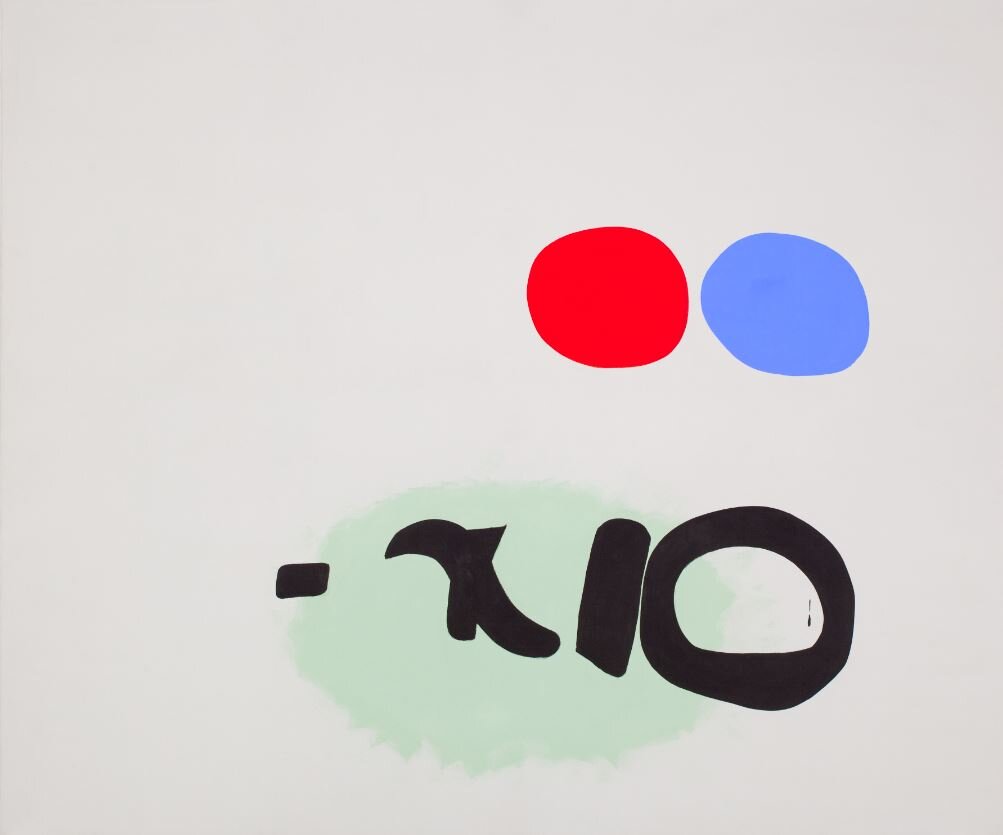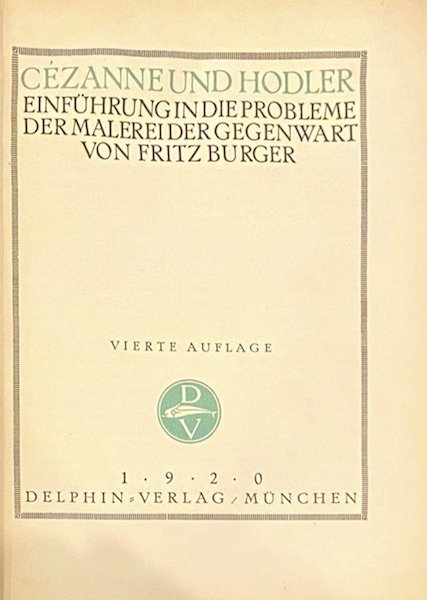In 1972, to mark the opening of Abstract Painting in the 70s (April 14 – May 12, 1972) at the Museum of Fine Arts, Boston, Adolph Gottlieb was asked to respond to five questions by Susan Drysdale, writer for the Christian Science Monitor. His responses were published in an article in The Christian Science Monitor along with the responses of other artists included in the exhibition such as Richard Diebenkorn, Robert Motherwell, and Helen Frankenthaler. Four works by Gottlieb were included in the exhibition.
Gottlieb's responses are printed below in full and supplemented with material from the Foundation's archives.
One of the four paintings exhibited in Abstract Painting in the 70s at the Museum of Fine Arts Boston, Adolph Gottlieb, Red vs. Blue, 1972, acrylic on canvas, 90 x 108"
Susan Drysdale: What have you found to be the greatest single problem facing you as an artist, and has this changed over the years?
Adolph Gottlieb: The greatest single problem I have facing me as an artist is the gap between the artist and the public, and I have found this has not changed through the years.
SD: Do you start with a preconceived idea of what you want to paint or what is your starting point?
AG: I generally have a clear idea of what I want to paint, otherwise I would be working in a state of confusion.
Adolph Gottlieb at 22nd Street studio, New York City, c. 1965. Photographer: Robert Estrin
SD: May I have some idea of your working methods – such as – if your work does not develop as you expect do you start again or work with it until something emerges, perhaps in a totally different form; do you paint directly onto the canvas, or sketch it out first or make preliminary drawings or what? Do you generally lay on the paint – with a brush, sponge, spray gun, etc; do you find it difficult to decide when a painting is finished, and when it is do you wish it out of sight, or are you reluctant to part with it?
AG: When I start working the painting must be good immediately, otherwise I discard the canvas and start another one. I have often worked over the same painting for long periods, but I am always seeking the “alla prima” that spontaneous effect that looks as if I get what I sought immediately. I detest paintings, that look labored and I do not want to burden the spectator with my struggle.
One of the four paintings exhibited in Abstract Painting in the 70s at the Museum of Fine Arts Boston, Adolph Gottlieb, Lake, 1971, acrylic on canvas, 90 x 108"
SD: If you were to name any three or four painters or people both contemporary and earlier whom you know to have had an effect on your work and viewpoint who would you pick?
AG: Concerning my influences: of early painters, Cimabue has had the greatest effect on me. Of contemporary painters, I cannot be so specific because if I see anything at all useful around me, I see no reason not to take it. I do not like to be tagged as being influenced by Mr. “X” or Mr. “Y” whom I consider my peers. I think I like doing best what I feel is uniquely my own. I shall say that in my early days, the painter whom I admired the most and who, in certain respects, influenced me was Cézanne. I have been influenced also by James Joyce, Dostoyevsky, and Sigmund Freud, as well as Hemingway and Faulkner. This may seem far-fetched, but it merely indicates that almost everything in our environment influences us, even phenomena such as the Grand Canyon.
Cimabue, The Virgin and Child in Majesty Surrounded by Six Angels, c. 1275, Collection of Musée du Louvre © 1997 RMN-Grand Palais (Musée du Louvre) / Hervé Lewandowski
Adolph Gottlieb, Pictograph, 1942, oil on canvas, 48 x 36“
Paul Cézanne, Madame Cézanne (Hortense Fiquet), 1891. Oil on canvas; 36 ¼ x 28 ¾”, The Metropolitan Museum of Art, Bequest of Stephen C. Clark, 1960 (61.101.2)
Adolph Gottlieb, Esther, 1931, oil on canvas, 19 x 24"
SD: Many people, even today, find it hard to understand that thought and emotion can be expressed in the abstract. Would you be kind enough to give me the titles of say three or four paintings in collections and in the Boston show that demonstrate their use as a vehicle for a particular emotion, and what in your opinion is the feeling that comes over strongest – tragic, joyful, contemplative, etc.?
AG: It is difficult for me to pinpoint the specific emotions I try to convey in my paintings. The closest I can come is to say the paintings deal with disparate images, and I am involved with tension which is set up in such polarities so that my work can be involved with both love and hate at the same time. Admittedly, this creates difficulties for people who must see things as either black or white. I do not think it is my responsibility to define the range in between, for this is a complex problem involving subtleties of feelings.
Adolph Gottlieb in his 23rd Street Studio, 1960. Photographer: Guy Weill.
From the Library of Adolph Gottlieb:
Title page of a book from Adolph Gottlieb's personal library: Burger, Fritz. Cezanne und Hodler: Eifuehrung in Die Probleme Der Malerei Gegenwart, Munich: Delphia Verlag, 1920.
A sketch made by the artist on the inside cover, c. 1922.
Title page of a book from Adolph Gottlieb's personal library. Joyce, James. A Portrait of the Artist as a Young Man, New York: B. W. Huebsch, 1917.
Title page of a book from Adolph Gottlieb's personal library. Freud, Sigmund. A General Introduction to Psychoanalysis, Garden City: Garden City Publishing Company, Inc., 1943.
Archival Material:
Letter from Susan Drysdale to Adolph Gottlieb including questions for the artist to answer for an article in The Christian Science Monitor, March 31, 1972.
Gottlieb's responses to Drysdale's questions, April 10, 1972.
Drysdale, Susan. "Abstract ‘Artmaking’ in the ‘70s", Christian Science Monitor, April 24, 1972
Installation image of Abstract Painting in the 70s (April 14 – May 12, 1972) at the Museum of Fine Arts, Boston. Adolph Gottlieb's Curtain (1971) is pictured to the right of the door frame.


















